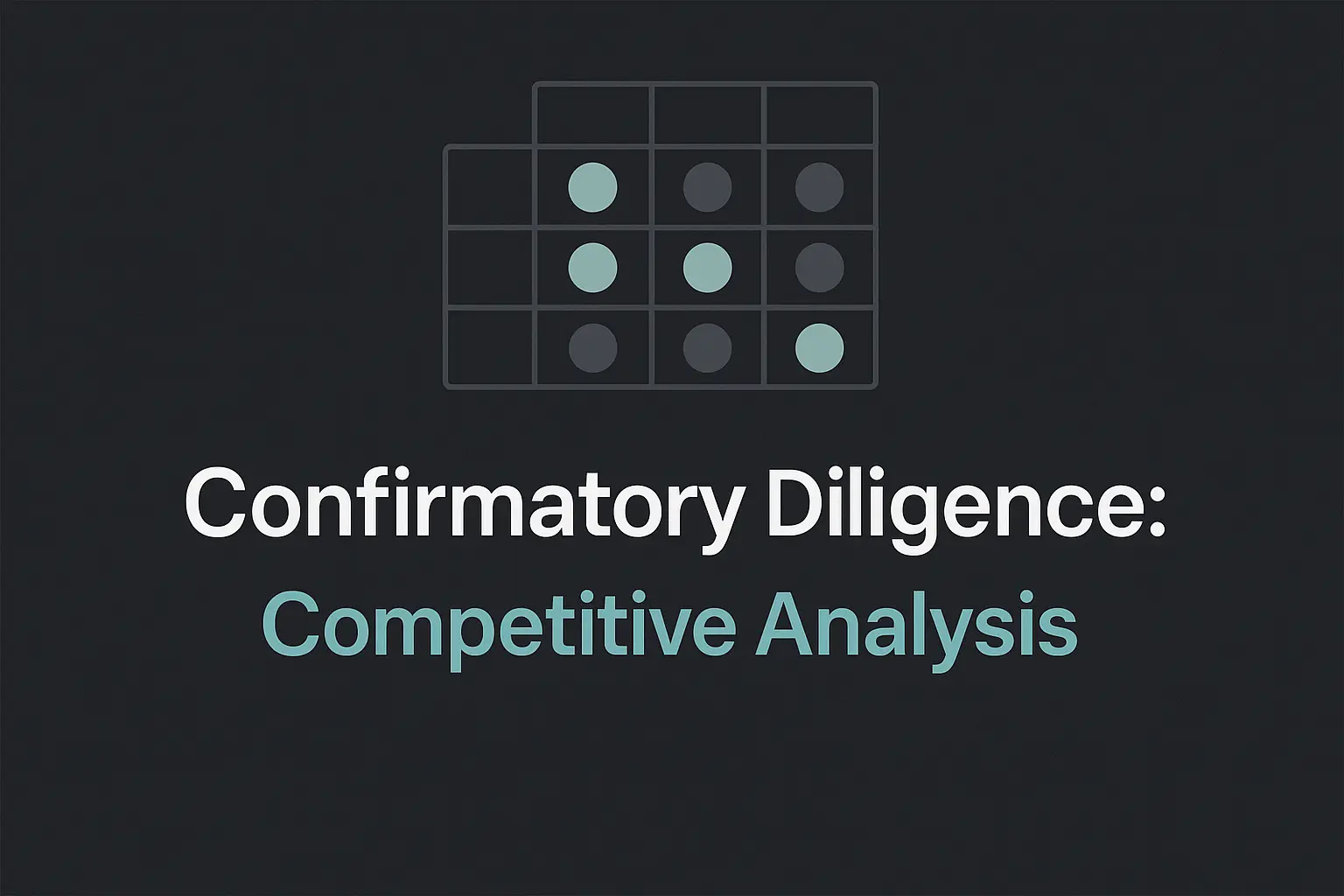
Confirmatory Diligence: Competitive Analysis
This article is written for acquirers of Lower-Middle-Market (LMM) software companies — including Private Equity buyers, holding companies, and strategic acquirers.
Confirmatory diligence is crucial to pressure-test what an acquisition target discloses in any section of the data room. However, one specific area where we do not see enough confirmatory diligence happening, is in competitive analysis.
Sellers are motivated to selectively cherry-pick competitors to mention, and the context to mention them in, in their data room uploads. Inevitably, there will be some information — perhaps a Harvey balls chart — that implies that the company's software capabilities significantly exceed that of their competitors on several important dimensions.
That may be true (the premise of all confirmatory diligence), but it may not be. Lets find out, using data room contents of competitor lists / capabilities, as a headstart. Here's what's next:
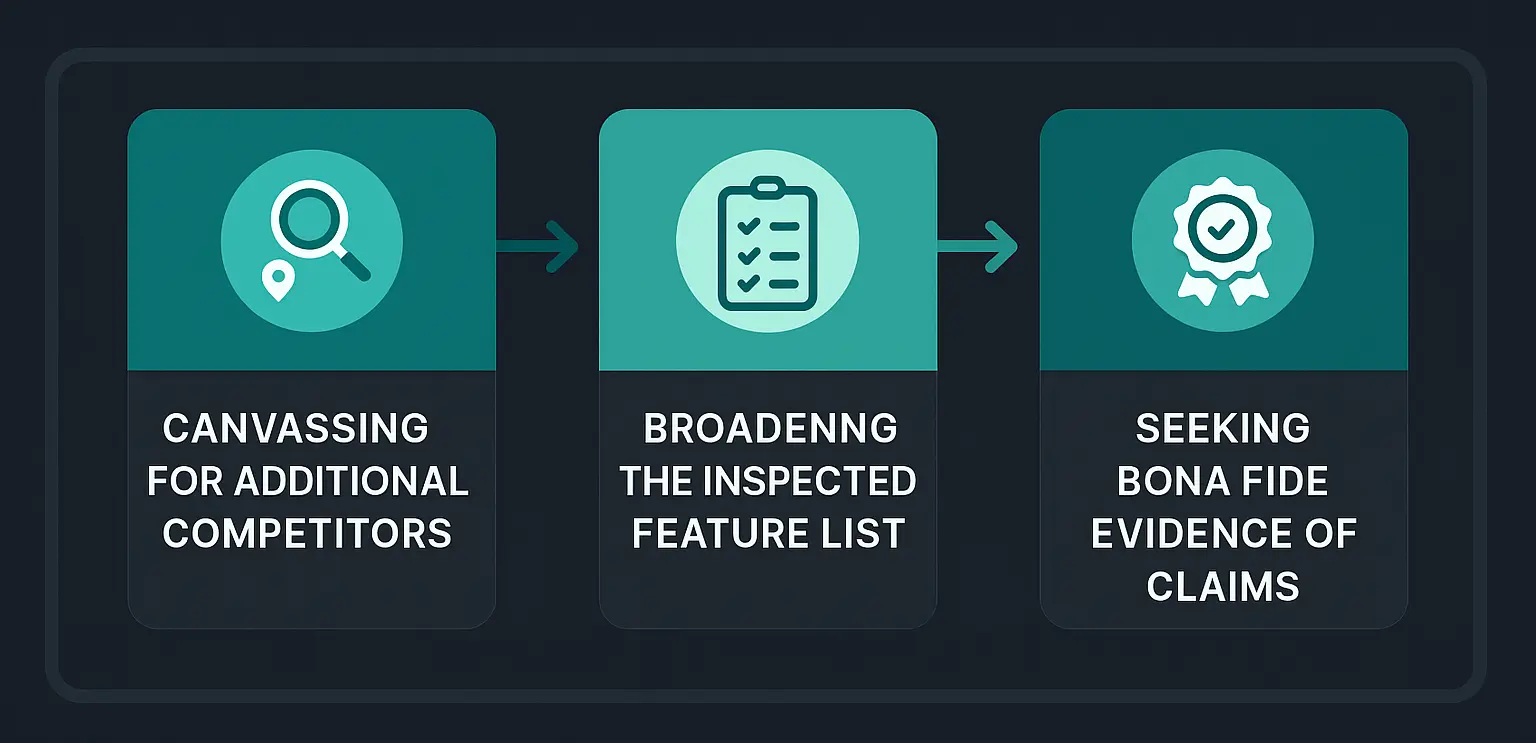
Ready to dive into each step?
Canvassing for Additional Competitors
At the outset of diligence, sellers have a unique advantage when it comes to framing the competitive set. They likely know their day-to-day competitive set better than you, and in the interest of completing a desired transaction, are likely to frame their competitive position in a way that strategically includes (and excludes) certain entrants.
Which competitors do you think they'll include in that analysis? Our bet, is that it will include:
- Obvious "No Way Around It" Competitors: ones that they know you'll expect to see, where it would immediately call into question their credibility to leave them out.
- Weak / Weakening Competitors: the ones they (the acquisition target) really want you to anchor on. The ones where they have a strong case of being able to win in head-to-head deals.
- Not-Really-a-Competitor Competitors: ones that focus on a different segment or buyer type, where it is easy to draw contrast and demonstrate a "right to win", because the "competitor" isn't really focused on the same Ideal Client Profile to begin with.
Does that ring true, in the data rooms you've seen? If so, here's what it often misses:
- An Abundance of Similarly-Positioned Entrants: These are the ones that the acquisition target would especially prefer that you not dwell on. In one case, our founder ran an industry analysis that revealed dozens — close to 50 — entrants that were similarly positioned (from a features/capabilities perspect) as the acquisition target in question. Expect to find these types of entrants.
- Upstarts with Low Cost Structure but Minimal Commercial Progress: Do with these what you will — your investment thesis may heavily value commercial progress and be dismissive of upstarts that have built similar technology capabilities without achieving commercial traction. But, at least be aware of these entrants, so that you can evaluate the potential that their (likely) lower sunk cost, lower cost structure, and cleaner cap table may enable them to approach a segment of the market in a way that your target cannot.
- Legacy Players That Haven’t Gone Away: These are the older, perhaps stagnant platforms that the target dismisses as “non-factors.” But their longevity can indicate sticky customers, entrenched integrations, or contractual inertia that make displacing them harder than expected. Don’t overlook them — their presence often explains why market share moves slower than innovation would suggest.
Need a hand building out an extensive competitive set for a particular entrant? In SuiteCompete, we make it easy to iterate on growing that list. You seed the list of with 2-3 competitors and features during new project creation, and we suggest additional ones (which you are free to accept or decline). Before long, you'll have quite the list of competitors to evaluate:
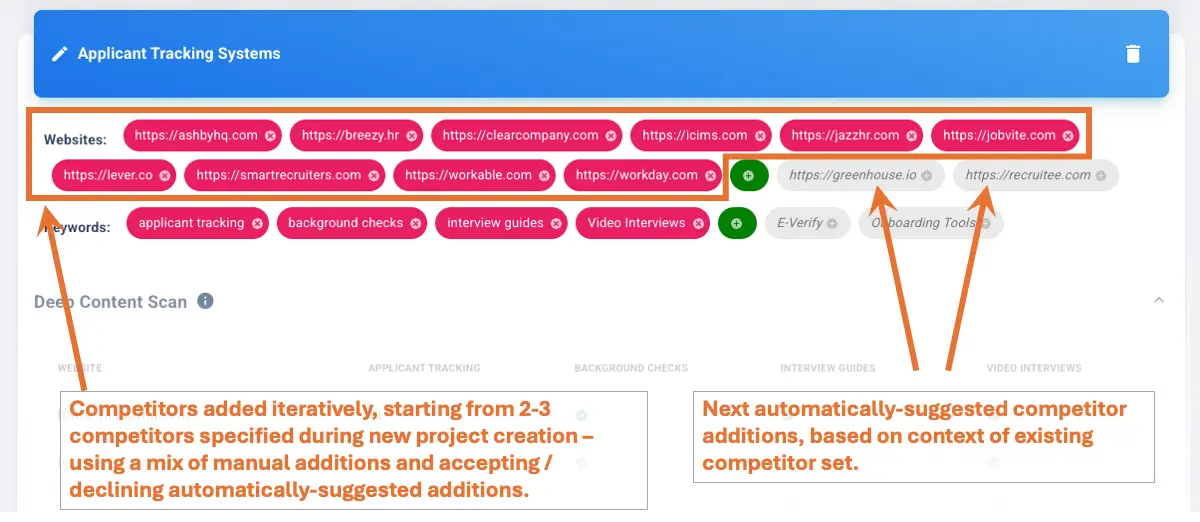
Broadening the Inspected Feature List
In the prior section, we set out to broaden the list of known competitors, starting from initial data room materials, but expanding into a robust list that encompasses all relevant competitors in the industry. We propose a similar process for feature/capability evaluation.
Again, there is no problem with starting from the list of capabilities/features provided by the acquisition target, using the same "seed the list during New Project creation" approach. But, as with identifying competitors, we recommend an iterative approach of growing an extensive list of relevant features/capabilities:
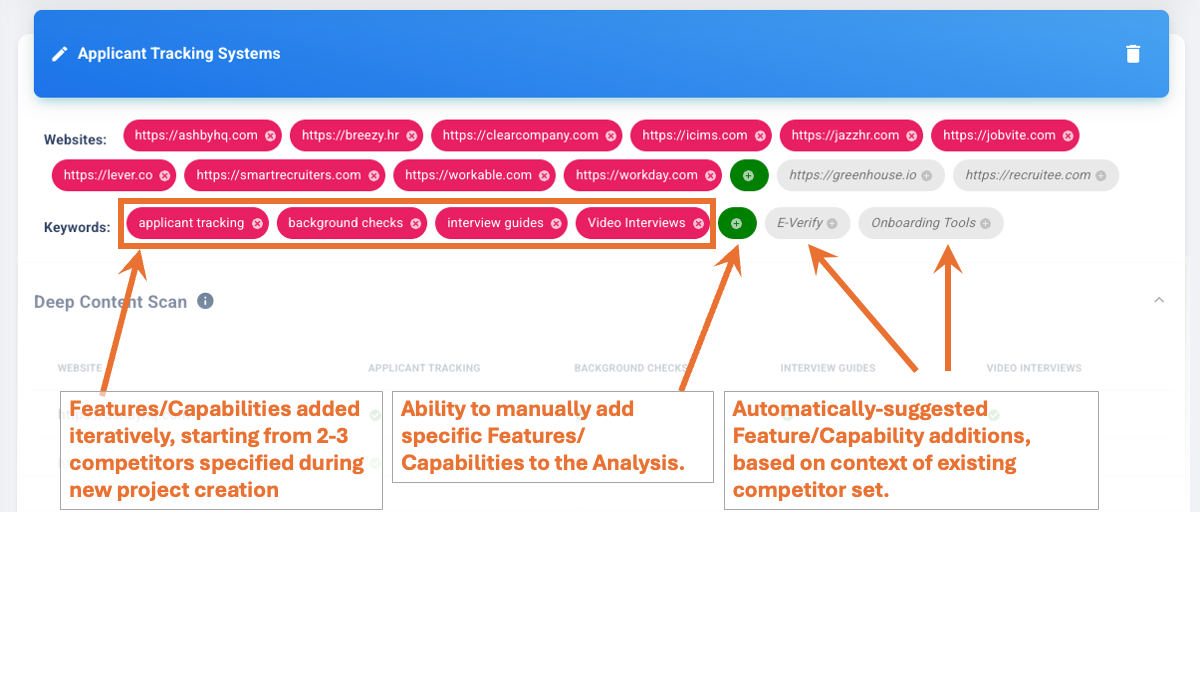
Seeking Bona Fide Evidence of Claims
Ever found yourself with an abundant list of competitors to analyze, and an abundant list of features/capabilities that you'd like to investigate for each of them?
If you ask your team of Analyst / Associate-level hires what that part of the process is like, you may be surprised to learn the extent to which this work currently happens with old-fashioned web search queries, manual review of feature pages, and careful review of any publicly-disclosed screenshots. It's a burden, but that burden is often hidden behind the cheerful face of a relatively junior team member who has spent late nights doing herculean work to prepare a summary analysis.
What else could that time have been spent on? We propose that it could have been spent on high-value "market check" phone calls to subject matter experts, but with the benefit of already having a Competitors x Features matrix in hand. That's why we built this:
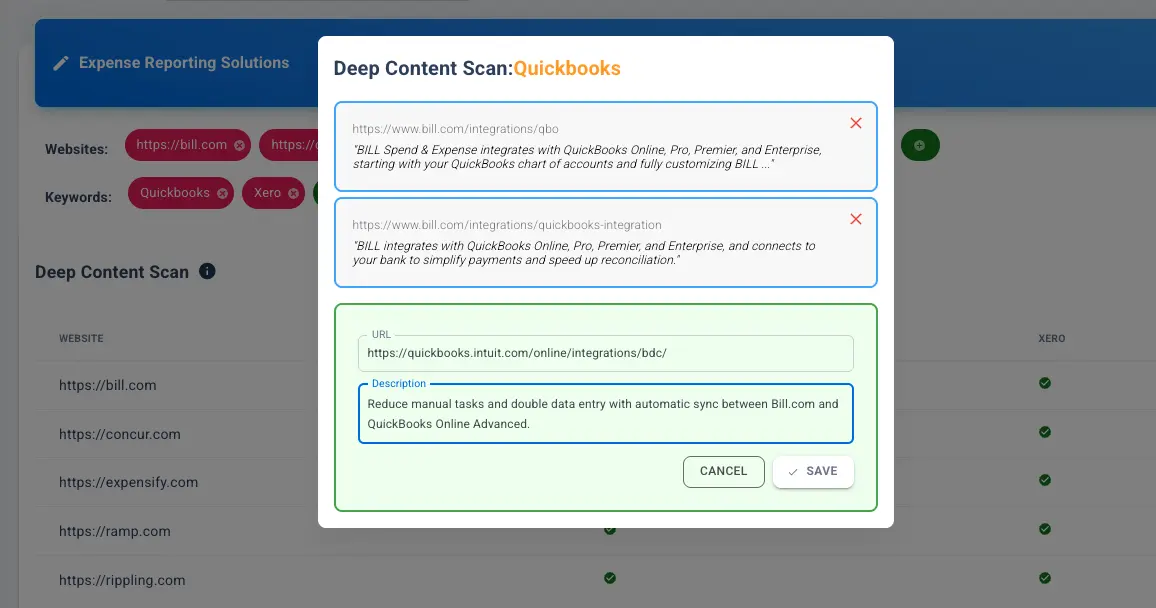
We especially focused on:
- Automatically researching web presence relating to each Competitor x Capability combination
- Summarizing it in table form — a huge head-start on your own Harvey balls perspective
- Making each cell clickable to view automatically detected "evidence" of the Competitor's Capability
- Vitally Important — making the Evidence dialog editable with full Add/Remove capabilities, so that professionals can revise automatic findings of evidence
Wrapping Up
Starting from an initial data room, we think buyers are dramatically better off in their understanding of competitors, if they:
- Canvass for Additional Competitors
- Broaden the Inspected Feature List
- Seek Bona Fide Evidence of Claims
By doing so, buyers can form their own proprietary, fact-based, robust understanding of the competitive set. This leads to dramatically smarter questions during interactive meetings with the acquisition target's management team, and stronger understanding of what Go-To-Market motions may be needed to accelerate growth... all informed by a deeper and broader understanding of the competitive environment. We're here to help if you need us.
